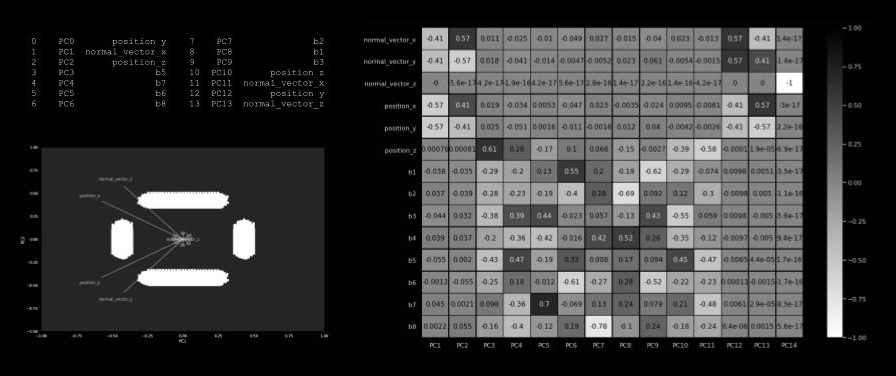Design objective
Create a tool to classify the windows in the apartment block according to the duration of their exposure to direct sunlight.
Case study: multistory apartment building
8 cores | 70X100 m perimeter | 46X76 m courtyard
Floors in each core: random within the range 8-16 | Floor height 3 m
Façade grid 3X3 m
Sun path setup: Moscow, Russia
Date: equinox, 20.03.
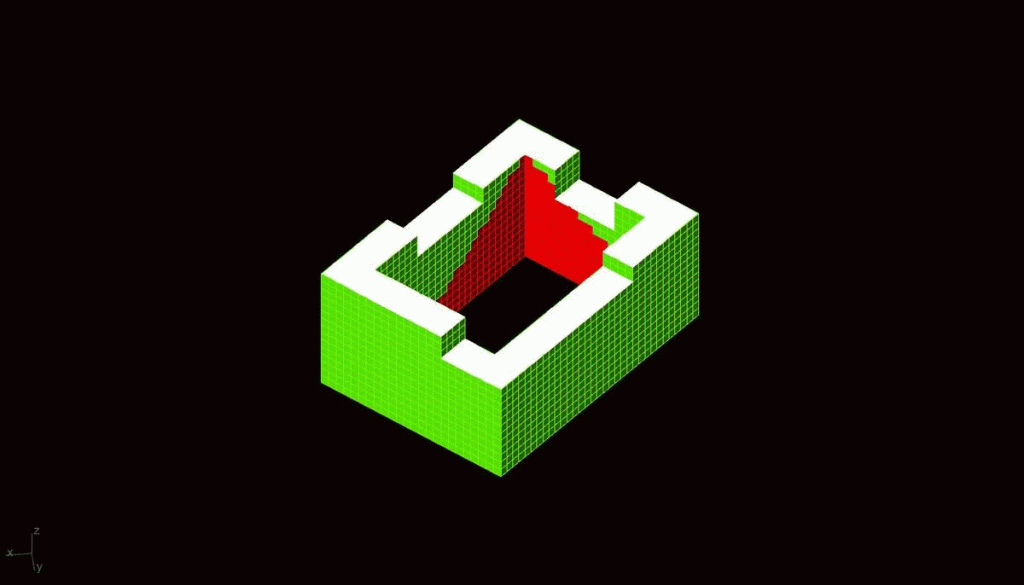
For this exercise decided to create a tool to classify the windows in the apartment block according to the duration of their exposure to direct sunlight. For the case study we have built a simplified model of a multistory apartment building with 8 cores, arranged into a rectangular urban block 70X100 meters. Its courtyard would inevitably have some dark corners. We have set up a simple rectangular grid for the facades – 3 by 3 meters, assuming that that would the realistic room front, and set up the sun path for Moscow, Russia, for the date of the spring equinox. The classification criteria for every grid cell is 2 hours of continuous exposure to direct sunlight. Windows which receive less sunlight get painted red, the rest are painted green. Actually, Grasshopper is already solving the task of sorting the windows with sufficient and insufficient insolation but the reason to learn how to do this task by the means of machine learning is that it may be required to do quickly in much bigger scales for the large masterplanning projects, when simulation may become require too much computation capacity.
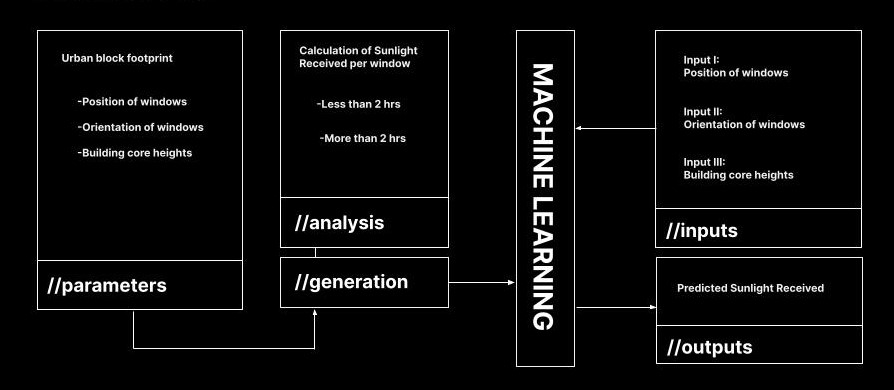
Upon building up the model and setting up the sunpath, we have generated a dataset with the following input parameters: position of windows, orientation of windows, building core heights. The building heights come in 8 assets because we have 8 cores. The output is the simple binary classification: yes and no, good or bad.
TRAINING : RUN I
DATASET

For the first iteration we have reduced the number of windows to be analyzed to the top 5 floors

The P.C.A analysis on the dataset shows a close relation between the features chosen for the machine learning model. The Y position of the windows have more impact on the prediction results, followed by the height of the building cores oriented to the north due to the chosen location. The analysis shows the features chosen are valid.
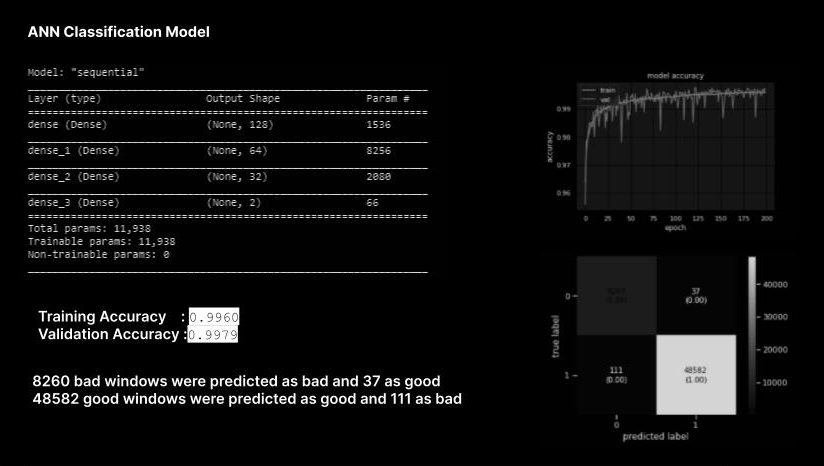
A sequential model was built for the particular exercise and after testing out various architectures, We arrived at a model with dense layers stacked as shown here, with number of neurons based on input and output parameters, and the model is run for 150 epochs.
The validation scores at the end of the training was at 0.997 . The observed results were positive as for the validation set, 8260 bad windows were predicted as bad and 37 as good. 48582 good windows were predicted as good and 111 as bad.
VISUALISING RESULTS
The output prediction for a new set of data(which the model has not yet been introduced to) is visualized and compared with simulation results. We observe that the predictions come very close to the simulation, with only a very few wrong predictions.

simulation vs prediction
TRAINING : RUN II
DATASET

Based on the results from the first set of analysis and predictions , the data set was further expanded. For this set of exploration, all interior windows are considered and five more categories are introduced for the sunlight received by the windows. Thus enabling a broader perspective of the window performances.
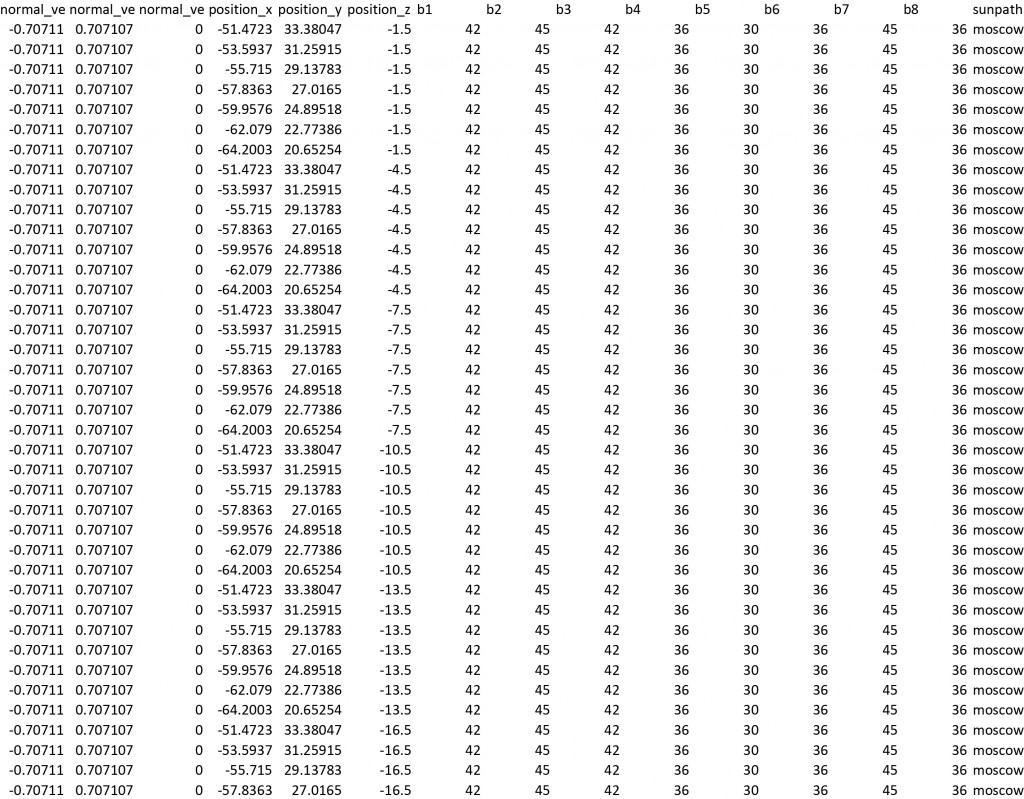
Upon the PCA analysis we observe that the dataset features still seem related but some features are now more prominent than others. The x and y positions are more relating to the results as compared to the window heights. This might be due to the nature of the sunpath chosen.
TRAINING
A similar model as the first iteration was built and hyper parameters tweaked with. And the model was run for 200 epochs which yielded good validation accuracy. The number of wrongly predicted windows have increased relatively but the difference between them remains less, as no windows tagged low performing are predicted as high or vice-versa.

As compared to the previous model more difference can be seen between the prediction and simulation , even though barely observable.
CREDITS
Predicting Window Performance with ML: AIA Computer Vision is a project of IAAC, Institute for Advanced Architecture of Catalonia developed at Master in Advanced Computation for Architecture & Design in 2020/21 by
Students: Krishnanunni Vijayakumar and Sergey Kryuchkov
Faculty: Gabriella Rossi and Iliana Papadopoulou
